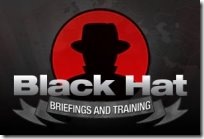Over the years, Experts Exchange has become quite the repository of tech advice, where people go to ask questions, then the experts compete to give the best answer and win the asker’s vote. It’s a pretty slick system, I suppose, if you are an ‘expert’, and your goal in life is seeing your username at the top of a list on their site, or if you have a question and have been unable to find an answer to it on any of the completely free message boards across the internet.
Whatever your reason for paying the fee to join their site, you have probably run across one of their pages if you have been searching for answers to a technical problem online. Their search engine placement has been historically good for a wide variety of key words and phrases.
A Bit of History
You have also probably run across Expert Exchange’s efforts to protect their paid content from the casual observer. If you are like me, you have seen them at the top of a search results page, cussed them out in your head, then moved on to the next result. That is because you know they often seem to have people asking the exact same thing you are in search of, and they seem to have people who have provided answers/solutions, but when you go there you are asked to pay to see the answers. But being the freebie seeking geek you are, you haven’t ever signed up for their site.
I remember that it used to be they would obfuscate their experts’ answers to a question with Javascript. That worked for a few minutes, until Firefox gained popularity and it became really easy to turn off Javascript.
For a long time, I thought that they had ended up removing their experts’ answers altogether. However, I learned that Experts Exchange is using a simple visual cue to make you think this so that you won’t find the coveted content for which they take great lengths to protect (and charge you $12.95 a month for access to).
The Hack
The secret is, if you just keep scrolling down the page, you will see all the answers to the question at the top of the page! What they do to make you think there is nothing there is show several empty bars of “Expert Comment” and “Accepted Solution”, followed by a “Sign up to view this solution” section, making you think the content is hidden. Below that, you will see a ton of “footer links”, making you think you are at the bottom of the page. However, keep going, and you will find the hidden pot o’ gold.
Why would they do this? Because they need Google to be able to crawl their content so they can maintain the excellent search engine placement they usually have. If they only showed the question, and not the answers, they would have much less worthy text to index, so it really behooves them to have that text shown somewhere in plain view. Obfuscating it with Javascript or CSS will only end up hurting them because Google looks at those things as ‘trickery’ due to the fact that they can be used for keyword stuffing.
This isn’t to say I don’t advocate paying for their service. I actually had the company I used to work for pay the fee a few years ago, but didn’t find myself using it that much, so I didn’t ask them to renew it.
In summary, scroll scroll scroll your way to the bottom of the page when you find an Experts Exchange result while troubleshooting on the Internet.

 I’m on my way back from the Black Hat DC 2009 briefings, and thought I’d give a brief synopsis of my experience there while waiting to catch a plane.
I’m on my way back from the Black Hat DC 2009 briefings, and thought I’d give a brief synopsis of my experience there while waiting to catch a plane.